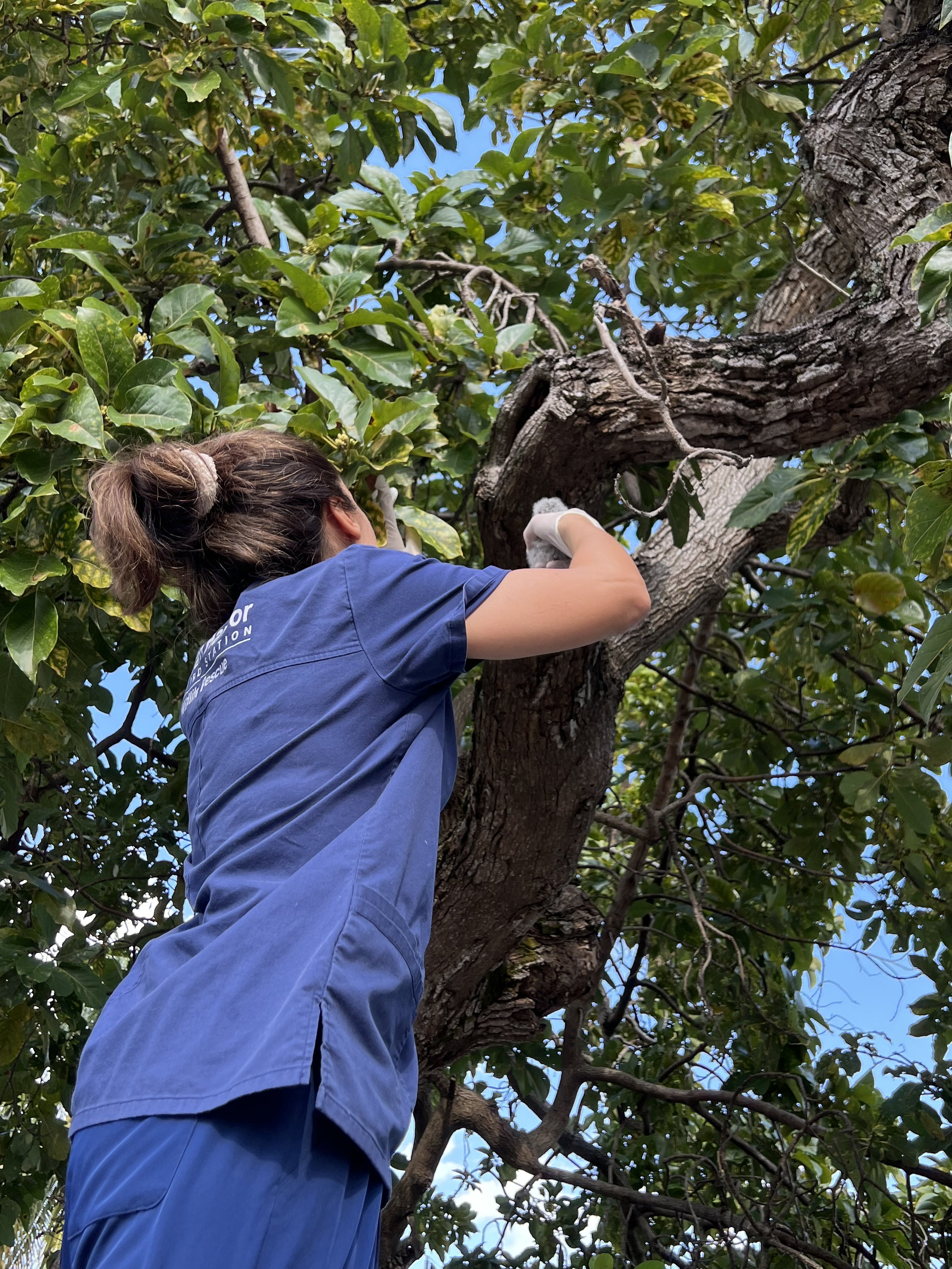Written by: Samantha Martinez, Environmental Educator
Barn Owl 22-842
In Miami, we are constantly growing and upgrading our infrastructure as new homes, highways, and businesses are built daily to expand our urban paradise. This, on occasion, can come at the cost of the homes of our wild neighbors. This is what may have happened to patient 21-842, a juvenile Barn Owl. This owl was found on a construction site after a tree, believed to be harboring the bird's nest, was cut down. Unable to fly and with dry blood covering his feet and nares, the owl was brought into Pelican Harbor Seabird Station. We see this all too often at PHSS, especially during the spring months as people prepare for hurricane season.
Once in care, our rehabbers noticed swelling and lameness in this patient's right leg, with x-rays confirming a midshaft fracture to the tarsometatarsus bone. The rehab team thoroughly cleaned the area and added a half splint with firm cast material to immobilize the young owl's leg during the healing process. This, coupled with supportive care, antibiotics, and pain medication, has this bird on the road to recovery. However, there is still a long way to go, and not all displaced fledglings are so lucky.
Wildlife rehabber, Carolina, renesting a displaced Eastern Screech Owl nestling.
We understand that tree trimming and construction are often unavoidable facts of urban life, especially considering the need to prevent damage from hurricanes. However, we recommend some simple ways to help avoid harm to wildlife when starting a building project or trimming trees for whatever reason. Such methods include doing an initial survey of the area to see if any wildlife is inhabiting it. You can check for droppings, nests, or nesting materials, and listen for animals in the immediate vicinity. If you find that an animal is nesting in a tree you plan to trim, we recommend leaving all branches supporting the nest as well as those protecting it from weather and predators until all babies have left the nest. Most birds will be done nesting by mid-July. Following these simple steps will help save countless nesting birds and mammals and prevent you from receiving costly fines associated with disturbing a federally protected nest. To learn more about protecting wildlife while trimming trees, feel free to reach out to us for a copy of our Animal Safety for Arborist sheet.





